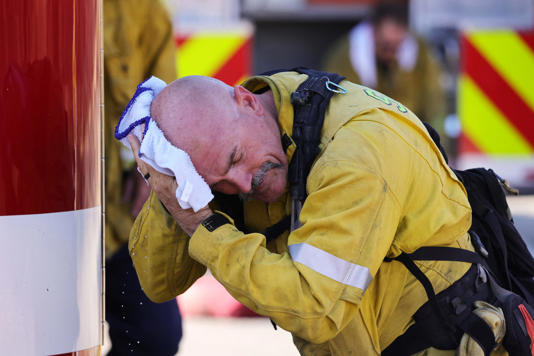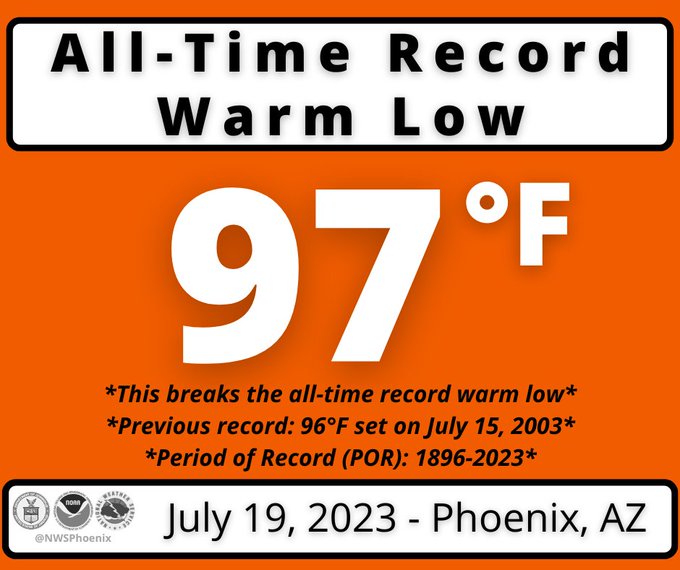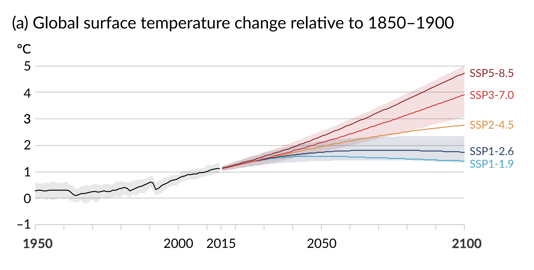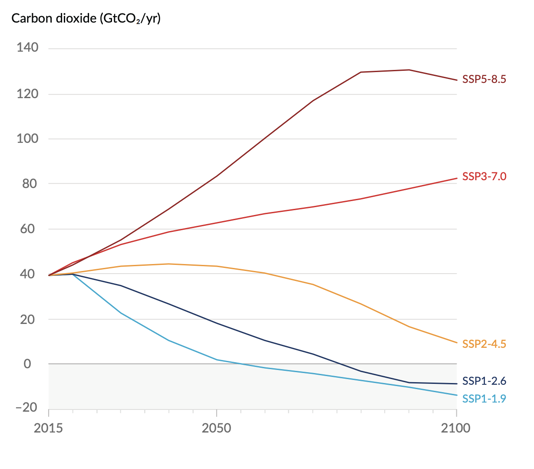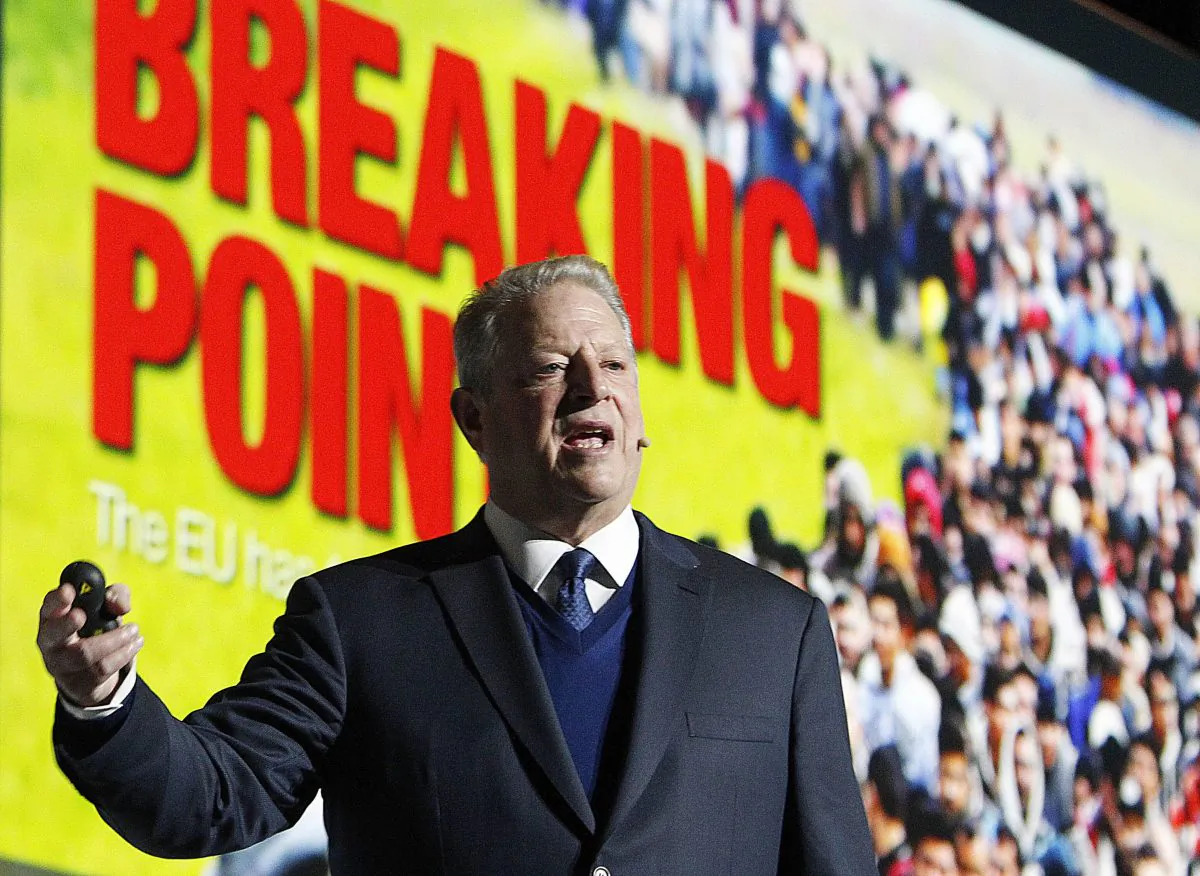
The heat is really getting out of Control. Sadly, because of this fact, people are totally buying into the Climate Change agenda. They are scared to the level of panic and willing to do just about anything to get some relief. This is a very dangerous thing!
People who have no Faith in GOD, find themselves at the mercy of scammers and deceivers. Anything or anyone that promises them some semblance of control in a world that is spinning out of control at breakneck speed.
The very scientists and technologists that have been the creating the climate changes are pushing for GLOBAL CONTROL over the solutions. They have not been as successful at their global takeover as they had expected. Getting desperate they are now taking even more dangerous steps to force people to submit.
They are playing with fire! Everything they do to our Earth and the sky above us, in their efforts to manipulate the masses and CONTROL the world has it’s repercussions. Unknow repercussions. They are after all just EXPERIMEENTING. They will admit themselves that they never have any guarantees of what will happen.
I am reminded of a day when I was driving a Semi across country. I drove back and forth across the Country at least a dozen times. I can tell you between Texas and California there is one entire section of the Country North to South that is UGLY! Nothing but UGLY for miles and Miles. Not even grass can grow there, thought you will see cattle. I don’t know what they eat. On that particular day, I was talking to GOD, and I asked him, “WHAT WERE YOU THINKING God that is a lot of land that seems a waste. In a country that has so much beauty, I just don’t understand why.” and GOD answered me. “Without this, you could not have the beauty.” What a revelation. GOD created a world in balance. HE is so amazing brilliant. He knows everything. He created all aspects of his world to work perfectly together. It takes all the different environments and to make the world that we see.
When humans or any other entities try to improve on GOD’s Creation, they have no idea what they are doing. Everything is interconnected. When one are goes off track, it affects all the rest. Lots of beings want to PLAY GOD, but they are not equipped!
spacer
spacer
168K subscribers
Portlanders outdoors directly impacted by the extreme heat spoke to KGW on how they’re combatting the weather conditions. Read more: https://www.kgw.com/article/weather/s…
spacer
582K subscribers
spacer
spacer
spacer


 USA TODAY
USA TODAY
“A dangerous, long-lived, and record breaking heat wave will continue over the Southwest through this weekend, particularly in the low desert areas, with triple-digit high temperatures also extending northward into the central Great Basin this weekend,“ National Weather Service forecaster Mussie Kebede said.
In addition to the Southwest heat, “oppressive heat and humidity are forecast to create widespread 105-110 degree heat indices across the mid-South, Southeast and Gulf Coast through early this weekend,” he added.
The heat is already being blamed for at least 18 confirmed deaths in the Phoenix metro area, with 69 other deaths suspected to be heat-related as of July 15. Gov. Katie Hobbs asked the state’s utility companies in a letter Friday to submit plans for preventing and responding to outages and to meet to discuss the state’s power infrastructure in future heat waves.
“As this devastating heat wave continues, the risk of heat-related deaths, illness and injury will only increase,” Hobbs said in the letter.
HEAT IN ARIZONA: Ajo Border Patrol detains migrants in outdoor chain-link cage during record heat
Next week’s forecast: More ‘excessive heat’
Sweltering heat is expected to continue in the Southwest through at least July 28, with some moderation thereafter, the weather service said.
While the heat has been constant in the Desert Southwest over the past few weeks, the Rockies and most of the Plains have avoided long stretches of intense heat this summer, AccuWeather forecasters said. But that will change in the coming days.
Indeed, hot summertime conditions look to expand over most of the remainder of the Lower 48 beginning the middle of next week, the weather service predicted. Many locations within the Midwest may reach their hottest temperatures of the year.
The excessive heat is also forecast to spread into the Ohio Valley and mid-Atlantic by the end of next week, according to a forecast map from the Climate Prediction Center.
Some 90-degree heat could surge into the Northeast later next week as well, Weather.com meteorologists warned.
What about August?
Overall, little sustained relief from the heat is in the forecast for the next few weeks as a heat dome, driven by strong high pressure, continues to show staying power into at least the early part of August, according to Bill Deger, AccuWeather senior meteorologist.
And according to the latest extended outlook from the Climate Prediction Center, much of the Plains from the Missouri Valley to Texas is likely to see above-average heat last through the rest of July into the first few days of August.
Beyond that, most of the nation is forecast to see a hotter-than-average August, the climate center said: “Widespread above normal temperatures are favored over much of the contiguous U.S.,” the center said.
Only a small portion of the Upper Midwest should see a cooler-than-average August.
Take the heat seriously
Take the heat seriously, the weather service said Friday, noting that the heat will continue to reach levels that could pose a health risk for many people. Some suggestions and warnings:
- Avoid extended time outdoors.
- The heat could be deadly to anyone without effective cooling and adequate hydration.
- Nighttime temperatures will provide very little relief.
- Heat is the leading weather-related killer in the U.S.
1 of 50 Photos in Gallery©PATRICK T. FALLON, AFP via Getty Images
This article originally appeared on USA TODAY: As US heat wave spreads, Arizona counts the dead: 18 confirmed, dozens more suspected
spacer
 European heatwaves are part of a pattern of rapid global warming. EPA/ABEL ALONSO
European heatwaves are part of a pattern of rapid global warming. EPA/ABEL ALONSO2,000 years of records show it’s getting hotter, faster
 Ben Henley
Ben Henley
Research Fellow in Climate and Water Resources, The University of Melbourne
New reconstructions of Earth’s temperature over the past 2,000 years, published today in Nature Geoscience, highlight the astonishing rate of the recent widespread warming of our planet.
We also now have a clearer picture of decade-to-decade temperature variations, and what drove those fluctuations before the industrial revolution took hold.
Contrary to previous theories that pre-industrial temperature changes in the last 2,000 years were due to variations in the Sun, our research found volcanoes were largely responsible. However, these effects are now dwarfed by modern, human-driven climate change.
Reading the tree rings
Without networks of thermometers, ocean buoys and satellites to record temperature, we need other methods to reconstruct past climates. Luckily, nature has written the answers down for us. We just have to learn how to read them.
Corals, ice cores, tree rings, lake sediments, and ocean sediment cores provide a wealth of information about past conditions – this is called “proxy” data – and can be brought together to tell us about the global climate in the past.

It has already been proven that counting the rings in the trunk of a tree is a totally unreliable method of getimating the age of the tree or anything else. Depending on multiple factors trees may not even add a ring in some years or even in multiple consecutive years.
Teams of scientists around the world have spent many thousands of hours of field and laboratory work to collect and analyse samples, and ultimately publish and make available their data so other scientists can undertake further analysis.
Previously, our team, along with many other proxy experts, meticulously analysed and collated temperature-sensitive proxy data covering the last 2,000 years from around the world, creating the largest database of temperature-sensitive proxy data yet assembled. We then made all of the data publicly available in one place.
Astonishing consistency between reconstruction methods
With this unique dataset in hand, our team set about reconstructing past global temperature.
We scientists are notoriously sceptical of our own analysis. But what makes us more confident about our findings is when different methods applied to the same data yield the same result.
In this paper we applied seven different methods to reconstruct global temperature from our proxy network. We were astounded to find that the methods all gave remarkably similar results for multidecadal fluctuations – a very precise result considering the breadth of the methods used.
This gave us the confidence to delve further into what drove global temperature fluctuations on decadal timescales before the industrial revolution really took hold.
What happened before human-induced climate change?
Our study produces the clearest picture yet of Earth’s average temperature over the past two millennia. We also found that climate models performed very well in comparison, and they succeed in capturing the amount of natural variability in the climate system – the natural ups and downs in temperature from year-to-year and decade-to-decade.
Using climate models and reconstructions of external climate forcing, such as from volcanic eruptions and solar variability, we deduced that before the industrial revolution, global temperature fluctuations from decade to decade in the past 2,000 years were mainly controlled by aerosol forcing from major volcanic eruptions, not variations in the Sun’s output. Volcanic aerosols have a temporary cooling effect on the global climate. Following these temporary cooling periods our reconstructions show there is an increased probability of a temporary warming period due to the recovery from volcanic cooling.
Recent warming is far beyond natural variability
There are, of course, natural changes in Earth’s temperature from decade to decade, from century to century, and also on much longer timescales. With our new reconstructions were also able to quantify the rate of warming and cooling over the past 2,000 years. Comparing our reconstructions to recent worldwide instrumental data, we found that at no time in the last 2,000 years has the rate of warming been so high.
In statistical terms, rates of warming during all 51-year periods from the 1950s onwards exceed the 99th percentile of reconstructed pre-industrial 51 yr trends. If we look at timescales longer than 20 years, the probability that the largest warming trend occurred after 1850 greatly exceeds the values expected from chance alone. And, for trend lengths over 50 years, that probability swiftly approaches 100%. So what do all these stats mean? The strength of the recent warming is extraordinary. It is yet more evidence of human-induced warming of the planet.
Now, think about that. 1800’s was the first Industrial Revolution. Things have gotten progressively worse since then. SO, it is not HUMANS that cause climate change, IT IS MACHINES/TECHNOLOGY/MODERN SCIENCE!!
But hasn’t there been natural climate change in the past?
Our understanding of past temperature variations of the Earth contributes to understanding such fundamental things as how life evolved, where our species came from, how our planet works and, now that humans have fundamentally altered it, how modern climate change will unfold.
We know that over millions of years, the movement of tectonic plates and interactions between the solid earth, the atmosphere and the ocean, have a slow effect on global temperature. On shorter (but still very long) timescales of tens to hundreds of thousands of years, our planet’s climate is gradually influenced by small variations in the geometry of the Earth and the Sun, for example, small wobbles and variations in the Earth’s tilt and orbit.
NOW, think about that. If the earth is effected by small vibrations and chnnges… Just what do you think all the “experiments” and manipulation of our earth and sky are doing to the balance to create chaos and climate changes? All that “Scientists” have been doing with all manner of energy. Microwave, Radio Waves, Laser Beams, Nuclear Explosions, Particle Impacts with the Accelerators, Nuclear Fusion, Nuclear Fission, FRACKING, DRILLING, etc. Yet they want you to believe the problems is Cow Farts, and Coal Fires.
From the Last Glacial Maximum, about 26,000 years ago, when huge ice sheets covered large parts of the Northern Hemisphere landmass, Earth transitioned to a 12,000-year warm period, called the Holocene.
If you believe their fairy tales, I feel sorry for you. They don’t even KNOW what is going on today, and yet they declare what happened thousands and even millions of years ago as if the have absolute knowledge. Are you kidding me? Their technology is a joke. I am sorry, their stories change with every day. GOD CHANGES NOT… and EVERYTHING HE SAID HAPPENED has been proven to be TRUE!
This was a time of relative stability in global temperature, apart from the temporary cooling effect of the odd volcano. With the development of human agriculture, our prosperity and population grew. Before the industrial revolution, Earth had not seen carbon dioxide concentrations above current levels for at least 2 million years.
Following the industrial revolution, warming commenced due to human activity. With a clearer picture of temperature variations over the past two millennia we now have a better understanding of the extraordinary nature of recent warming.
NO, not due to HUMAN ACTIVITY. DUE TO SCIENCE and TECHNOLOGY. Most of what those maniacs have been doing has no even been known by common humans. The ruling class alone is responsible for all the damage that has been done. The common man has no control over what is produced and available to them.
It is up to all of us to decide whether this is the kind of experiment we want to run on our planet.
Interesting the choice of the word EXPERIMENT. because that is what the ruling class has been perpetrating on humanity and the EARTH for years, decades, centuries!
spacer
spacer

Image for representation onlyPhoto byElena MozhviloonUnsplash
Last year in 2022, the planet Earth set a series of records.
First, on June 29, 2022, the planet recorded its shortest solar day by completing its rotation in 1.50 milliseconds less than 24 hours.
Then the record was broken for a second time in the following month. On July 26, 2022, Earth completed its rotation in 1.47 milliseconds less than 24 hours breaking its June record.
Prior to 2022, Earth’s shortest rotation was on July 19, 2020.
On a typical day, Earth may take just under 24 hours to complete one rotation on its axis. And that exact time is 23 hours, 56 minutes, and 4.09053 seconds.
Earth’s spinning time is measured using atomic clocks.
According to scientists, there could be several reasons the Earth is spinning faster. One theory is that it could be due to the motions of the planet’s inner molten core. It could also be due to seismic activity or the melting of the glaciers.
Another reason is the Chandler Wobble which refers to a slight deviation in the Earth’s axis of rotation.
While the Earth’s rotation speed may seem insignificant right now, if it suddenly starts spinning much faster, there may be some long-term consequences.
A faster rotating Earth would result in a shorter length of the day, which could disrupt our daily routines and have an impact on the timing of astronomical events.
It could also cause changes in weather patterns, increase seismic activity and volcanic eruptions as well as cause changes in the distribution of mass within the planet.
Scientists DO NOT KNOW why the Earth is spinning faster and days are getting shorter and the Sun is getting hotter… BUT THOSE WHO LOVE THE WORD OF GOD KNOW!
spacer
The shortest day ever recorded was June 29, and it was shorter than a typical 24 hours by 1.59 milliseconds. Some scientists say its climate change, others say maybe it’s because of earthquakes.
A MARTINEZ, HOST:
Good morning. I’m A Martinez. Ever feel like there’s just not enough time the day? Consider this – the Earth is spinning faster than ever, and it’s making our days shorter. The shortest day ever recorded was June 29. It was shorter than a typical 24 hours by 1.59 milliseconds. Some scientists say it’s climate change; others say maybe earthquakes; still others suggest movement inside the Earth’s core. Whatever the reason, even if it’s just 1 1/2 milliseconds, I can’t afford to give up the sleep. It’s MORNING EDITION.
Copyright © 2022 NPR. All rights reserved. Visit our website terms of use and permissions pages at www.npr.org for further information.
spacer
Climate Change – United Nations Sustainable Development
spacer
What do these events have in common?
Twenty (and counting) straight days of temperatures exceeding 110 degrees Fahrenheit in Phoenix, Arizona. 126 F measured in China. 120 F at 1 a.m. in Death Valley, California. 109 F in Rome.
They’re all new temperature records. Yes, heat waves are normal. But continuously breaking, nearly breaking, or obliterating heat records isn’t normal. Such historic and sustained heat is expected to increase in the coming years as added global warming exacerbates heat waves, and overall temperatures will continue to rise until emissions of heat-trapping greenhouse gasses drop to zero.
So, you might ask yourself: How hot will it get??
The answer is dependent on the most unpredictable part of the carbon dioxide and methane, humanity loads into the atmosphere. So while a single, neat answer isn’t possible, scientists have created different heating scenarios – which are like highways to considerably different destinations – based ultimately on the choices made by prodigious carbon emitters, world governments, and beyond.
“These scenarios are so dependent on what humans are going to do – and we are not great at predicting what humans are going to do,” Flavio Lehner, a climate scientist at Cornell University who researches future warming and how it will impact Earth, told Mashable.
|
NWS Phoenix
@NWSPhoenix
|
Already, Earth has warmed by 2 F (1.2 C) since the late 19th century.
How hot will Earth get?
About 10 years ago, things looked dire.
What’s more, renewable energy – the likes of wind and solar – has vastly expanded, now providing some 13 percent of energy in the U.S. (though renewables are still currently outpaced by fossil fuels both in the U.S. and globally).
“We have entered an energy transition that wasn’t apparent a decade ago,” climate scientist Zeke Hausfather told Mashable. This energy change has considerably decreased the likelihood of a worst-case climate scenario.
“What we’re doing is making the darker futures increasingly unlikely,” Hausfather said.
“What we’re doing is making the darker futures increasingly unlikely.”
On the other end of extreme scenarios is SSP1-1.9, which would limit warming to just some 2.7 F (1.5 C) above pre-Industrial Revolution levels by the century’s end. It’s the bottom, light blue line below. That’s the warming target global leaders hoped to hit when they signed the historic Paris Agreement in 2016. But it’s likely humanity will blow through this ambitious warming goal, as soon as the 2030s.
Related video: How Hot Is Too Hot For Humans To Survive (The Weather Channel)


 The Weather Channel/ How Hot Is Too Hot For Humans To Survive
The Weather Channel/ How Hot Is Too Hot For Humans To Survive“It’s not good news. But it’s also not the worst news,” Lehner, the climate scientist at Cornell University, said.
Crucially, high warming amounts, up to perhaps some 7 F (around 4 C), are still possible and can’t be completely ruled out, Lehner said. But such warming is at the extreme edge of what’s likely, he emphasized.
So how much warming is currently realistic? Something close to the SSP2-4.5 trajectory, which is the middle orange line above, explained Hausfather. That’s in the 4.8 F (2.6 to 2.7 C) range above pre-Industrial levels.
“It’s roughly our best estimate from policies today,” Hausfather said, referencing the current climate policies enacted by nations. Roughly is an important caveat here, because other factors — such as how exactly Earth will respond to future CO2 levels in the atmosphere — are uncertain.
|
Zeke Hausfather
 @hausfath
|
|
|
How bad will global warming be?
Some 4.8 F (2.6 C) of warming this century is still a lot. That’s a future any reasonable person would want to avoid.
“We can do a lot better,” Hausfather emphasized. “Current policies will hopefully not be the best we can do for the rest of the century.”
Already, just some 2 F (1.2 C) of warming has stoked momentous changes. The heating has:
- made intense wildfires more frequent, because a warmer atmosphere dries out vegetation and trees, which more easily burn. (“It takes just a little bit of warming to lead to a lot more burning.”)
- amped the odds for record-breaking heat waves.
- made marine heat waves — which cause major coral die-offs — more frequent and extreme. Marine biologists expect marine heat waves this century to have “significant” and “widespread” ecological impacts, like on the fish that depend on coral ecosystems.
- made droughts more severe, like the prolonged Southwestern megadrought. Historically, droughts have significantly decreased crop yields.
- increased the odds for more extreme downpours and floods, created warmer ocean temperatures which are jet fuel for hurricanes. Though hurricane development hinges on a number of complex weather factors, and the science of hurricane intensification is still unfolding, the U.S. National Oceanic and Atmospheric Administration expects cyclone intensities to increase in a world warmed by 3.6 F (2 C).
Clearly, a world at some 2 F (1.2 C) is problematic, and for some, catastrophic.
“Already, we’re seeing unprecedented events,” Lehner explained. “It’s not the same climate anymore. That’s all happening at 1.2 [C].”
“Already, we’re seeing unprecedented events.”
So what happens at 3.6 F (2 C), which is around a doubling of today’s heat? “A lot of these impacts will double in frequency or severity,” Lehner said. “In a 2 degree [C] world it’s likely things are twice as bad or worse,” he added, noting that not all changes will be linear (meaning changed by the same proportion to increases in heating).
Want more science and tech news delivered straight to your inbox? Sign up for Mashable’s Light Speed newsletter today.
That’s why limiting the warming, as much as possible, is critical — not just for ourselves, but for the future residents of Earth. They will experience serious sea level rise. But, it doesn’t have to be devastating.
“Every 10th of a degree matters,” Lehner said.
spacer
The IPCC: Who Are They and Why Do Their Climate Reports Matter?
 |
 |
Published Jul 16, 2008 Updated Oct 11, 201Overview
The Intergovernmental Panel on Climate Change (IPCC) was established in 1988 under the auspices of the United Nations Environment Programme, by the World Meteorological Organization (WMO) and the United Nations Environment Programme (UNEP) to assess climate change based on the latest science. It does not carry out new research nor does it monitor climate-related data. It bases its assessment mainly on published and peer reviewed scientific technical literature.” The goal of these assessments is to inform international policy and negotiations on climate-related issues.
Through the IPCC, thousands of experts from around the world synthesize the most recent developments in climate science, adaptation, vulnerability, and mitigation every five to seven years. Governments request these reports through the intergovernmental process and the content is deliberately policy-relevant, but steers clear of any policy-prescriptive statements. Government representatives work with experts to produce the “summary for policymakers” (SPM) that highlights the most critical developments in language accesible to the world’s political leaders. Scholars, academics and students can dig into the chapters and supplementary materials for a thorough and deeper understanding of the evidence.
The IPCC has issued comprehensive assessments in 1990, 1996, 2001, 2007 and 2013, methodology reports, technical papers, and periodic special reports assessing specific impacts of climate change (the latest ones in the works: oceans and ice cover, land degradation, impacts of 1.5°C warming).
The fifth assessment report, AR5, is the most comprehensive synthesis to date. Experts from more than 80 countries contributed to this assessment, which represents six years of work. More than 830 lead authors and review editors drew on the work of over 1000 contributors. About 2,000 expert reviewers provided over 140,000 review comments.
AR5 assessed more extensively than prior assessments the socioeconomic impacts of climate change and the challenges for sustainable development. The inclusive process by which IPCC assessments are developed and accepted by its members ensures exceptional scientific credibility. For this reason, AR5 serves as the basis to inform domestic and international climate policies. Many countries draw upon the IPCC in their national climate assessments. Such as the November 2017 release of the first volume of the U.S. fourth National Climate Assessment (NCA4), also referred to as the Climate Science Special Report (CSSR).
The role of governments
Although assessment reports are scientific in nature, their purpose is to inform international political negotiations on climate issues. Therefore, governments—as the key stakeholders in these negotiations—play an essential role in the report’s production.
Government representatives propose authors and contributors, participate in the review process, and help reach a consensus on the report’s major findings. This can result (especially in the SPMs) in language that is sometimes weaker than it otherwise might be. However, one always has the option to look into the chapters to see where the evolving science is heading and explore the references cited. The full assessment is a multi-level document for a wide array of audiences ranging from planners investing in protecting their communities to political leaders.
But it also means that governments cannot easily criticize or dismiss a report that they themselves have helped shape and approved during political negotiations. As Sir John Houghton, co-chair of TAR Working Group I, once put it: “Any move to reduce political involvement in the IPCC would weaken the panel and deprive it of its political clout. . . . If governments were not involved, then the documents would be treated like any old scientific report. They would end up on the shelf or in the waste bin.”
It is important, however, to reiterate a fundamental point about IPCC assessments: although governments are involved in the process and support it financially, science ultimately predominates. The chapters that underpin all the documents are written by and under the control of scientists, and scientists ensure that all the documents are both consistent with the findings of each chapter and scientifically credible in their own right.
spacer
When the global warming movement started gaining momentum in the early 1990s, proponents began insisting that climate change science is irrevocably settled and the issue is not up for debate. It’s irrefutable, they said, that human-caused climate change is real, and carbon dioxide and other greenhouse gases resulting from the use of fossil fuels are an urgent threat and must be stopped.
That’s still the refrain today, but this rigid stance doesn’t sit well with the numerous scientists who don’t agree and who worry about the billions being spent to prevent a tiny amount of anticipated warming—efforts that may in the end bring about little, if any, change.
These so-called skeptics say the climate has historically had warm periods and cool periods and will continue to do so—that’s simply how the climate cycles—and that man-made CO2 is not a pollutant, nor is it on track to cause apocalyptic climate change, as the global warming movement maintains.
“In general, science is never settled, it’s always an ongoing organic process. But they’re trying to abuse the authority of science in order to pursue policy objectives that, for one reason or another, they think are important,” says climatologist and author Patrick Michaels, the director of the Center for Study of Science at the Cato Institute in Washington, D.C.
“There has really been no recent convincing evidence that what we would call the view of cataclysmic global warming has any support. I mean, the Earth’s surface temperature continues to warm at a very modest rate. It didn’t warm at all, depending on whose record you look at, from the late 1990s to about 2014—and the only way that a warming was deduced from that record was to change the data, not the observation.”
As for anthropogenic global warming (AGW), Michaels says it’s possible for humans to exert subtle changes on the climate, but there are other factors as well.
“Some of the warming since late 1970s has a human component, but I don’t believe that the warming from 1910 to 1945 had a human component,” he says. “So yes, we have a role, but so does nature and natural variability.”
Back in 1997, Michaels was one of the 31,500 concerned U.S. scientists, including 9,000 with PhDs, who signed their names to a petition rejecting the Kyoto Protocol, the first international climate change treaty.
The preamble states that the limits on greenhouse gases (GHGs) proposed by the Kyoto agreement “would harm the environment, hinder the advance of science, and damage the health and welfare of mankind” and notes that there’s no scientific evidence that GHGs are causing catastrophic heating of Earth’s atmosphere.
“Moreover, there is substantial scientific evidence that increases in atmospheric carbon dioxide produce many beneficial effects upon the natural plant and animal environments of the Earth,” it reads.
A posting on the Right Climate Stuff, a website founded by former NASA scientists and engineers, says CO2 “is a naturally occurring substance required to sustain human, animal, and plant life, and for which there is no substitute” and says it is “scientifically embarrassing” that the U.S. Environmental Protection Agency (EPA) has declared it a pollutant that must be regulated.
Substantive Disagreement
Michaels, a past president of the American Association of State Climatologists, is a former contributing author and reviewer on the Intergovernmental Panel on Climate Change, the United Nations body that leads the charge in the push to halt warming.
The IPCC claims that, according to its computer models, the world has already warmed by 1°C and is projected to reach 1.5°C by 2040. If that happens it would bring catastrophic results like rising sea levels, more powerful hurricanes, scorching temperatures, worsening droughts, heavy flooding, and melting glaciers.
To forestall such a scenario, the IPCC wants the world to move away from fossil fuels and reduce or even eliminate CO2.
There is substantive disagreement in the broader scientific community about this theory. Skeptics say such talk is alarmist, not based on sound science, and amounts to eco-hysteria and scare-mongering.
“I believe that the global warming establishment is a political, social organization, not a scientific one, so I don’t think the science is settled and I don’t think they know what they’re talking about,” says Ian Clark, a professor in the Department of Earth Sciences at the University of Ottawa and director of the Ján Veizer Stable Isotope Laboratory, named in honour of Canada’s leading geoscientist Ján Veizer.
“The main problem I see is that it’s overstated, because the evidence doesn’t find that CO2 is a strong global warming agent, a strong greenhouse gas. … And I’ll also say that the danger, the impacts, the cries of climate catastrophe are also hugely overstated, because there really hasn’t been much of an impact.”
Numerous dire predictions made over the years by the IPCC and others have failed to materialize. Among them is climate change guru Al Gore’s famous 2008 prediction that the Arctic would be ice-free within five years (by 2013).
The latest IPCC report, released in October, says if CO2 not drastically reduced by 2040, the world will suffer disastrous, irreversible consequences.
“My belief is that there is a very strong, a very large group of scientists who either don’t know or don’t believe in [the AGW] opinion,” says Clark, adding that it would be far better if the “billions upon billions upon billions” being spent on climate change were instead put toward some of the world’s most pressing environmental problems.
No Consensus
After the release of the IPCC report, Gore made an astonishing admission in a wide-ranging interview on PBS NewsHour: that the language in the report’s presentation was exaggerated to prompt political action.
“The language that the IPCC used in presenting it was torqued up a little bit, appropriately—how [else] do they get the attention of policy-makers around the world?” he said.
Gore’s statement doesn’t surprise Marc Morano, author of “The Politically Incorrect Guide to Climate Change,” co-writer and narrator of the documentary “Climate Hustle,” and founder of the website ClimateDepot.com.
“I have a whole chapter [in my book] just on U.N. scientists who turned against the U.N., and they talk about how they’ll sit around at meetings at the United Nations and say, ‘We’ll make the next report so alarming the world will have to act,’” he says.
“What they’ve done is they’ve tried to make every normal weather event seem unusual,” adds Morano, formerly a U.S Congressional aide who served as a senior adviser and climate researcher for U.S. Senator James Inhofe.
In 2010, Morano released a report listing more than 1,000 scientists worldwide who challenged the IPCC’s claims of man-made global warming.
The same year, 130 German scientists sent a letter to the chancellor voicing their concerns. In 2009, more than 100 international scientists challenged then-President Barack Obama’s climate claims, calling them “simply incorrect.” Also in 2009, 166 scientists from around the world wrote an open letter to the U.N. secretary-general declaring that the science is not settled. Scientists in Russia and India have also challenged the AGW theory.
“The bottom line is this: there’s massive scientific dissent,” Morano says, adding that the claim that there’s a 97 percent consensus among scientists on AGW has also been roundly debunked.
‘Built on Dishonesty’
The IPCC was established on the basis that CO2 is a threat, Morano says, so any other finding is not an option. The reason? Financial gain and a push for increased central planning, he says.
“The idea was if they find CO2 is dangerous not only do they get to keep having annual meetings and budget increases and national media and go all over the world and keep this alive, but the U.N. gets to also be in charge of the solution. So what are the odds that the climate panel is ever going to find that we don’t have a climate crisis?”
Canadian author Grant R. Jeffrey states in his book “The Global Warming Deception” that the industry overall is extremely well-funded.
“The climate change industry supports the academics, scientists, non-governmental organizations, media, and political groups (Philanthropic Organizations and UNIVERSITIES, and the Medical Industry) that together promote the anthropogenic global warming movement,” he writes.
“There is far greater financial support available to those who promote the man-made global warming agenda than there is for any scientists who dare to explore alternative research theories.”
Nations are currently meeting at COP24 in Katowice, Poland, to finalize the rules for implementing the 2015 Paris Agreement on climate change. Morano says the outcome will simply be more money poured into supporting a movement “built on dishonesty.”
“Even if we do face a man-made climate crisis and we have to rely on the United Nation or the EPA to save us we would all be doomed, because nothing they propose would actually make a difference. It’s all climate symbolism, with a real economic and political agenda behind them.
“That’s what it’s all about, not the science.”
spacer
Look up into the sky in any country in the world, especially on early morning weekends and you’ll see tons of chemicals being dumped into our skies. While you sleep they dose the skies with stuff that is killing you with a wide variety of cancers. Considered a conspiracy before Covid, this dosing of our skies has now been normalized by the media and the majority of the world population say nothing. Just like they did when their politicians and media told them to wear a mask, stay at home and inject poisons into their bodies.
All the people who fly these planes and dump this stuff into our skies, should they face the death penalty for these crimes? “Nanotechnology”, that word should scare the living crap out of the populations because it’s inside all the Covid vaccines, but somehow that’s also been normalized. As one youtube source comment stated “”Nanotechnology” = Salting clouds”. Mind boggling psychological mind control
National Bugle Radio with Patrick SlatteryOct 8, 2019Patrick talks to Mark Collett on why population growth, not climate change, is the real environmental catastrophe.
3 years, 9 months ago
pacer
 spacer
spacerOur sun drives our climate, our global electrical circuit, magnetosphere, and much more. Our sun also goes through cycles, recorded in our geological record as well as our ancient texts. Some of these cycles we are taught about, others, we are not. Today our ignorance of some of these cycles is being used to push forth an agenda that only has an elect elite’s interests at heart, at the people’s, and planets peril.Also,. thats Brian Stelter right there lmao,.. he has to be what 20-22? I have to get Mark Dice to dub over this so I can repost it lmao
